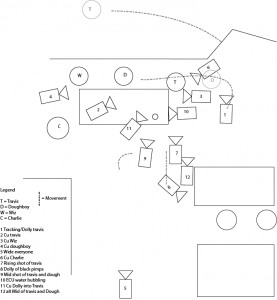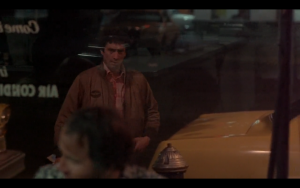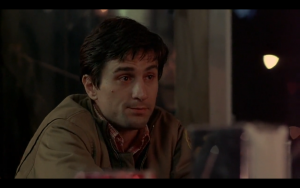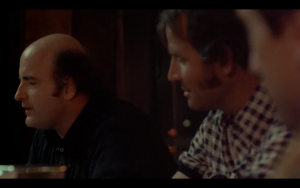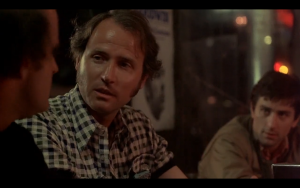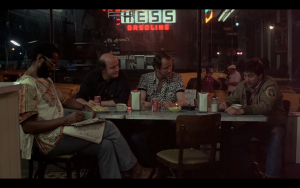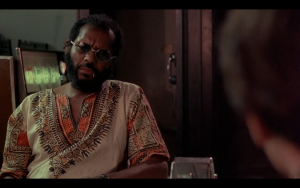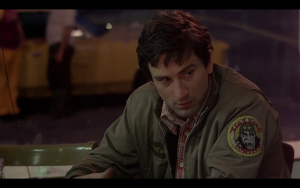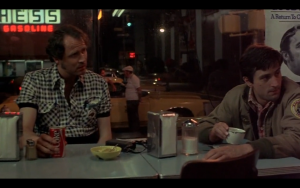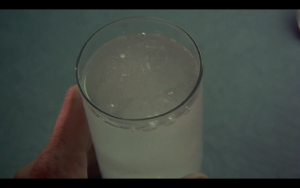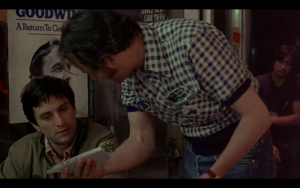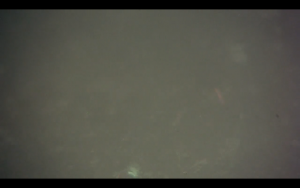The scene I will analyse this week is from the 1976 Martin Scorsese film taxi driver with cinematography by Michael Chapman. The scene I have selected spans from 15:07 – 18:25 from when Travis enters the diner and converses with his fellow drivers until he leaves the diner.
Lets begin by looking at the various shots and setups within this scene which I have mapped in this simple diagram
Here are frames to reference each shot
and this variation 5b.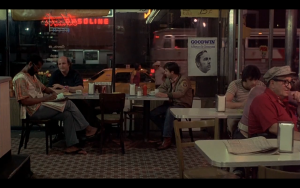
I think one of the most significant points we can see from the diagram is that Scorsese has used a different camera setup for almost every shot with the small exception of shot 5. This would seem to suggest that in this scene Scorsese favours moving the camera around the actors to create compositions rather than moving the actors in the frame.
Take these three shots for example.
11.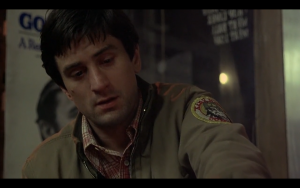
Scorsese could have covered all Travis’s action within the scene from a single camera setup as each of these shots contains a relatively similar composition of Travis with little figural movement. When combined with the movement of the camera (2 – still, 7 – rising over Travis, 11 – dollying into Travis) however, each angle gives adds a different dynamic to the scene as Scorsese connects the viewer with Travis’ gaze.
This is one of the techniques Scorsese uses to build stylistic and rhythmic elements within the scene as well as the film as a whole. This scene functions primarily to develop these stylistic and rhythmic components over any key narrative progression as we listen to drivers sharing stories which hold no real bearing with the plot or characters. We see Travis listening almost with indifference to still shots of their discussion, what the audience learns in this scene is not through dialogue of the script but rather through the reactions seeing Travis feeling the movement of the camera.
One theme of the film which is touch upon is Travis’ racist tendencies. We get a subtle gauge of this as Wiz introduces him to the back taxi driver Charlie, they share a glance at one another and we see a shot/ reverse shot as Travis coldly acknowledges him. Perhaps another in subtle indicator of this opposition is within the framing of the wide shot of the group as Travis and Charlie are positioned at separate ends of the table in opposition to one another.
The real notion of Travis’ racism come shortly after as the camera begins moving camera rising above a hunched over Travis anxiously glancing to the other side of the room. We cut to shot 8 dollying past a pair of pimps, Doughboy’s voice becomes slightly distant as Travis zones out, a pan back with shot 9 signals his return to the conversation. The racial implications are secondary to the visual effect as Scorsese uses this movement coupled with the sound to give the audience the impression of entering Travis’ subjective mental state.
Once again the audience is enveloped in Travis’ mind as he empties a fizzy tablet into his cup we alternate between shot 10 and 11 each shot drawing closer to its subject until the screen is entirely filled with the drink. Scorsese also uses sound to contrast this with Travis’ last mental episode as before we Doughboys voice drain away, yet in this instance the fizzing of the capsule consumes us both visually and aurally attaining an abstract quality as it fills the screen and our ears completely.
These episodes also suggest potential distortion the temporal/spatial relations of the scene. The first episode distorts the space of the diner as although we see the pimps in the diner we never see them in the final wider shot nor is their presence explicitly acknowledged by any of the other characters.
The second episode distorts the time within the scene as we are absorbed into the glass we return to Doughboy talking to travis from another position perhaps indicating that whilst we have been staring into the fizz that an unknown amount of time has passed.
Both these episodes of Travis’ psychosis are defined from the other moments of the scene through the use of camera movement and sound control. These impressionistic states not only build the style and the rhythm of the film but they also inherently influence the character development as in a sense these moments are the audiences experience as lived through Travis.
I would argue that Scorsese’s preference of moving the camera around the actors for is attests to his commitment towards the stylistic structure of the film. This impressionist style is potentially influenced by the French impressionism movement as we see it reoccur at multiple points in the film. As a result these impressionistic departures resonate strongly with the viewer as Scorsese lures us into Travis’ mind.

